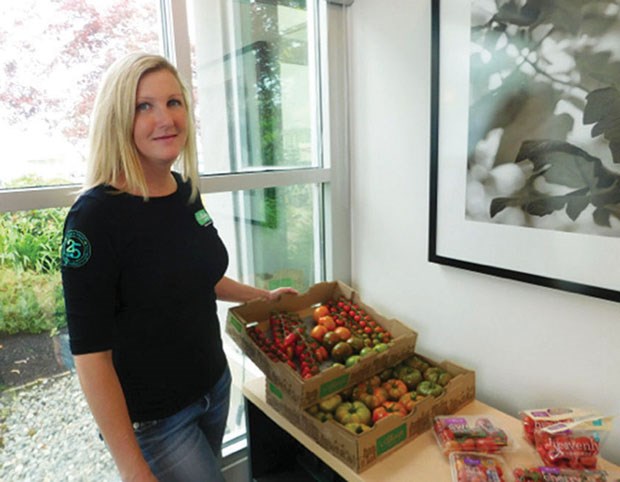For Laura Bryce, a tomato grower at Village Farms, tasting delicious new varieties is a rewarding part of her job.
The challenge for Bryce and her colleagues comes before this, during the search to find and grow flavourful and unique new tomato varieties for grocery store shoppers.
That search can send the Village Farms growers on travels to Ontario, California and even as far away as Holland, all renowned greenhouse growing areas. Here commercial greenhouses and seed company demonstration houses grow new varieties of Roma, Beefsteak and tomatoes-on-the-vine.
“We need to see not only what is new,” explains Bryce, a graduate of Kwantlen’s horticulture program, “but also how these plants perform under various growing conditions.”
The search for new varieties goes even further. The Village Farms team often travels to Italy, Spain, Belgium and France. In these tomato-producing areas seed companies grow new types of cocktail, grape, cherry, plum, strawberry as well as heirloom tomatoes.
“It truly is a collaborative effort between the growing team as well as an extensive team in marketing, sales, finance and development,” Bryce says.
Finding a great tomato variety is one thing, but growing it here in Delta brings its own set of challenges. A winning variety here has to pass the next step: plant trials.
“We want to see how a variety performs in Delta,” explains Bryce, “under the specific climatic conditions found in our greenhouses.”
Each variety has its own growing requirements in terms of the amount of water, sun, shade and even nutrients it needs to grow well and produce fruit.
“You really need to look at meeting the specific needs of a particular variety,” explains Bryce, “and we can manipulate many of the growing conditions to meet those needs.”
Factors that can be managed include drippers to increase or decrease water flow, planting more or less densely, and pruning more or fewer leaves and flowers. If needed, whitewash on the roof can also help to shade plants in the summer. These all help the plant to achieve its potential.
Careful records are kept on how the new varieties perform. Tolerance to disease and pests, ease of growing and good fruit yields are all important factors to becoming a winning variety.
Other aspects like fruit shelf-life, shape, colour and texture are also important.
“But to be chosen as next year’s crop,” Bryce says emphatically, “the variety must, above all else, have great flavour.”
How long does it take before a trialed variety is selected? Sometimes just one year.
“San Marzano was a variety we only grew once,” recalls Bryce, “and we knew right away that we had a hit.”
Other varieties, like Merlice, are slower to show their value, taking a few years before it was chosen.
We all have our favourite tomato, but in Bryce’s job the challenge is to find room for new favourites.
“This year it’s Cherry No. 9 and Cabernet,” she says without a moment’s hesitation.



